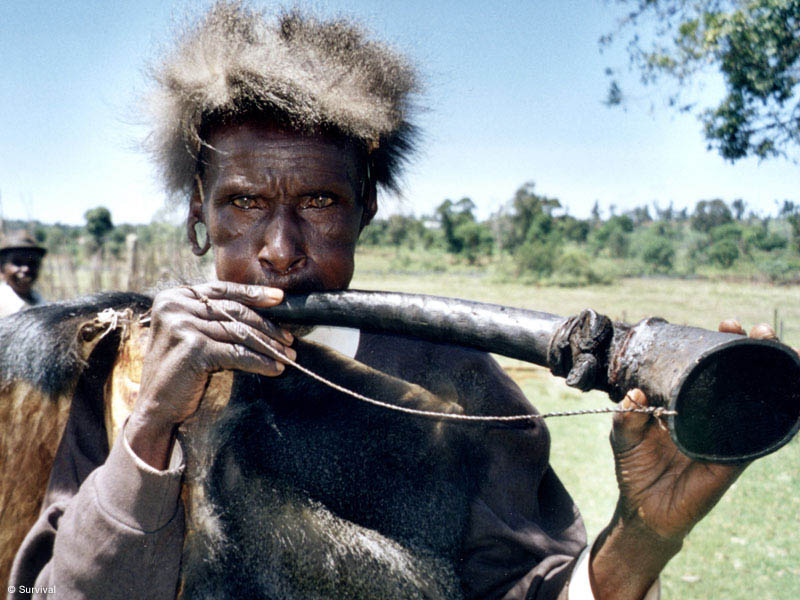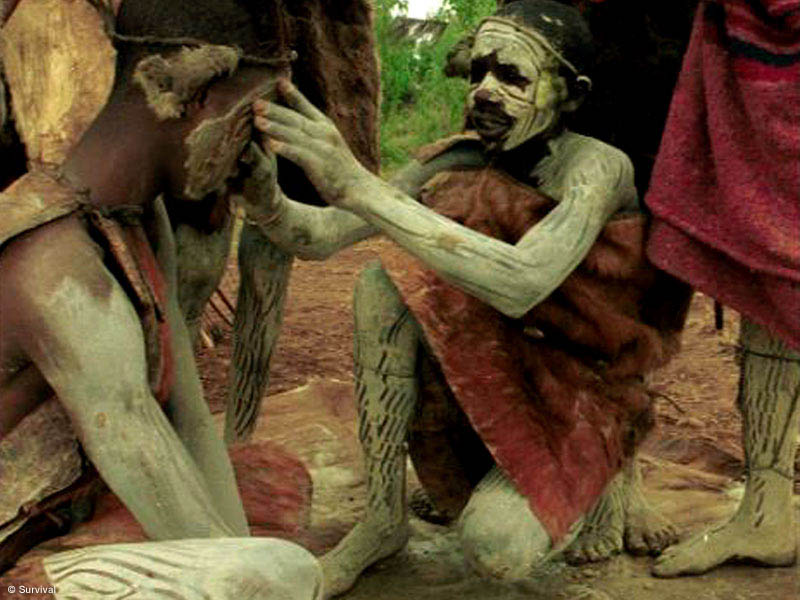As I sit and watch the last vacant space across from our apartment, once filled with trees, being ripped apart by men with fire, pangas, and chainsaws, I wonder...is it worth it? more flats when the last that went up are still vacant? do we have to rip down every tree? is this progress?
I felt pained as the trees i enjoyed and appreciated were turned into firewood.
At least i can still stroll or drive over to Nakumatt and buy food...but what about forest people who live from trees, their very lives depend on trees.
For them the loss of even one tree must be terrible. Its time their voices be heard.
There is no better way to show the state of the forest than these pictures i took last weekend. (to be shared all later)
I kept asking the Ogiek rep, 'Where is the Forest?' I kept hoping to get enveloped in the green darkness that is the forest, but that never seemed to happen. I kept seeing crops, tractors, long expanses of almost dead tree stumps... Now, my intention when I thought up this project was not really to try and save the forest. It was to give the Ogiek a voice. To help them tell the world of their mistreatment, their heritage, their culture, everything. But after talking to the chief, i discovered that you cannot seperate the two. He told me. 'Moving an Ogiek from the Mau Forest is like takin a fish out of the water, putting it on land and telling it to survive' So what do you want then?, I asked Kiplangat, the Ogiek People's Development rep. He said they wanted all non-Ogiek's off Mau forest. Anyone who cannot trace his / her family roots back to the Mau forest almost 100 years ago. I wanted to know what they were going to do after all the other people had left. Since they are farming as of now, would they stop? (not written word for word as he said it. Translated and grammatically corrected) 'We will plant trees. We will take it back to being a forest. No Ogiek likes farming, which is why even with all this land, we are still poor. We do not have the framign resourses, and we don't care about it. We farm right now because we need to survive. After we plant the trees, all the trees in the forest will play host to a couple of bee hives. We will harvest it, and sell it. We will live as we lived many years ago. We will hunt antelopes and hyraxes for food and but what we cant get with the money from honey. We want only one title deed. For the community, not for the individual. We want to start tree nurseries. Breed trees that we can sell in Kenya and outside....'
If you ask me, that sounds like an effing great idea!
Meanwhile, this is the state of the forest....
If it was a farm, then it is very beautiful. For a forest however....
Finally, after months and months of planning, Nate and I got time to make the journey to Mau forest. Nate's movie, Togetherness Supreme is in post, and we have been scheduling pick-ups with the DOP who could only be available for 7 days. In the middle of all that planning, somehow Nate forgot the Mau forest visit... We set off from Nairobi at 1 pm on Saturday, knowing very well that we would be in Nakuru by 3, meet the Ogiek People's Development Program rep, visit the forest and come back. Barely 20 minutes out of Nairobi, Nate noticed that the car was smoking so mush so, he could not see behind him. We pulled to the shoulder, (if you know Kenyan roads, you will know this does not exist).The bonnet was now smoking too. He pulled up the hood...more smoke. 
Although, we had to take a matatu to the shop where we were to buy the replacement hosepipe. Almost 2 hours later, we were back on the road. It was pretty obvious by now that we were not going to make it to Nakuru and back. Kiplangat, the ODPD's rep, was still patiently waiting for us. We agreed to meet the following morning at 7.30 am at his office. Too early for a Sunday, but he had to be back in Nakuru by 1pm to make sure that the memos they were preparing for the Members of Parliament in regards to their eviction reached Nairobi in time. He even helped us book a room at Merica Hotel.
Nate faithfully set his alarm for 6.30am, I did not set mine.
Sometime in the morning, in between sleep and awake, I wondered how long the night was. Nate woke up and went to the bathroom, which made me open my eyes. I noticed that was incredibly bright outside for 6.30 am. I checked the time. It is 8.45 am! the alarm did not go off...we over slept! I frantically call Kiplangat, who is very understanding...but not before telling us that he had cancelled when we did not turn up... We literally grab our breakfast, pack it and head to their office. Finally, we are on the road. Later, we would meet the chief, who wanted Nate's camera as a gift. Took a while to explain that it took Nathan a trip to the US to get it and its the only one he had... 3-4 hours later, we had covered the Mau forest, or what is left of it, and were on our way back. We were trying to hurry back as we had to be on location the following day for pick ups. We got home at around 6pm, only to realise that we did not have our bedroom keys, and the spare ones were inside the bedroom. I did not understand how he could have left them in the hotel room in Nakuru.
How and why did he remove them from his pockets?? We thought about breaking down the door, but decided against it. We even thought about driving back to Nakuru...We drove around the neighbourhood looking for locksmiths, Googled them...nothing. It was 6pm on a Sunday, which locksmith in his right mind would be in the workshop / office? We drove to Kibera, talked to a guy who assured us that he knew how to open the lock. 20 minutes later and very bad body odour, the door was still locked. I had called the apartment's caretaker, who had come with a bunch of keys that did not work. I had implored him to call the guys who installed the locks to come and check if there was anything they could do. About an hour later, one of the installers came by and less than 5 minutes later, the door swung open. The hotel was helpful enough to send the keys.
Even after all that drama, nothing could dampen my spirits. It was the journey that marked my first step to making this project a reality, a step that took forever to take. Now I am accountable to the lovely people I met in Mau forest. Now I HAVE to do this!
Despite being largely ignored by the majority of Kenyan society, the Ogiek people of western  Like many indigenous cultures throughout the world, their way of life has come into conflict with the policies of the government of the country in which has been formed around them. The Kenyan government has recently proposed a plan to remove all people from the
Like many indigenous cultures throughout the world, their way of life has come into conflict with the policies of the government of the country in which has been formed around them. The Kenyan government has recently proposed a plan to remove all people from the
The Ogiek are a small people group, estimated to number around 20,000. They are traditionally a hunter-gatherer society, one of the few remaining such groups in
As honey gatherers, who survive mainly on wild fruits and roots, wild game hunting and traditional bee keeping, they can therefore be considered as friendly to the environment on which they depend. Due to their small size and traditional lifestyle the Ogiek have long been a marginalized group in Kenyan society. They have never had a member of their tribe serve in national or provincial government, and the tribe itself is not even recognized among
Information getting to the public about the Ogiek has been pretty much one-sided. The focus has been the forest and the effects of having human occupancy in the forest. This has in turn been translated by the general population to mean that the Ogiek contribute to the degradation of the forest. What has been left out of these reports is that the Ogiek people have maintained a way of life that is deeply dependent on the survival of the
Their way of life is based on the simple ideology of not taking more than is needed from the forest, and always giving back to it. Much of the degradation of the
The counter effect of civilization is the exclusion of communities not strong enough to keep up with it. The further they are from development, which unfortunately is measured by technology advancement, the easier it is for a group of people to be forgotten, which has been the case for the Ogiek. Consequently, they have been misrepresented, if at all, in the public eye, as to what their role is in the forest and as to whom they are as a community. As it stands majority believe that the Ogiek are the sole cause for the forests decline and degradation, and the ultimate solution would be to kick them out of the forest. They are also viewed as a very hostile and bloodthirsty community. There is a need to show the other side of the story, if only to balance the equation; need to tell the story from the other side. They need to be given a chance to tell about the many numbers of their kin being killed in efforts to remove them from the forest, the living with fear of eviction from the only place they have called home for centuries and the eventual decline the community faces. This is exactly what this project seeks to do. By providing this indigenous community that is on the verge of decline with a medium in which they can voice out their concerns, views and plight, this project will be the fist of its kind. During the colonial period, there were efforts to assimilate the tribe as away of doing away with them, which led to a great reduction in their numbers.
There does not seem to be any efforts being applied into making sure that this community thrives and does not get absorbed into the mainstream. As the pressure mounts for them to move from the forest, the younger generation is moving to the city, getting educated, intermarrying and settling in the urban centers. The community is fast on the decline and if the trend continues, the Ogiek are going to be history in the next 20 or so years. The urgency to tell their story is so great it cannot be overemphasized. If they are to successfully be kicked out of the forest, its only matter of time before they get assimilated in to the global cities which spells out an end for them as a people, and of their rich culture.
This is purely why I am embarking on this project. Keep reading to follow its development.

![Reblog this post [with Zemanta]](http://img.zemanta.com/reblog_e.png?x-id=eee05ff1-36a0-4ef9-95b0-93cc90af1e23)

